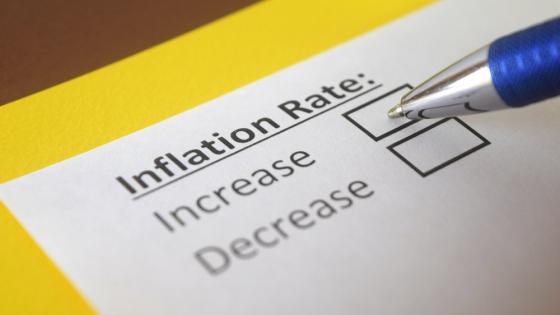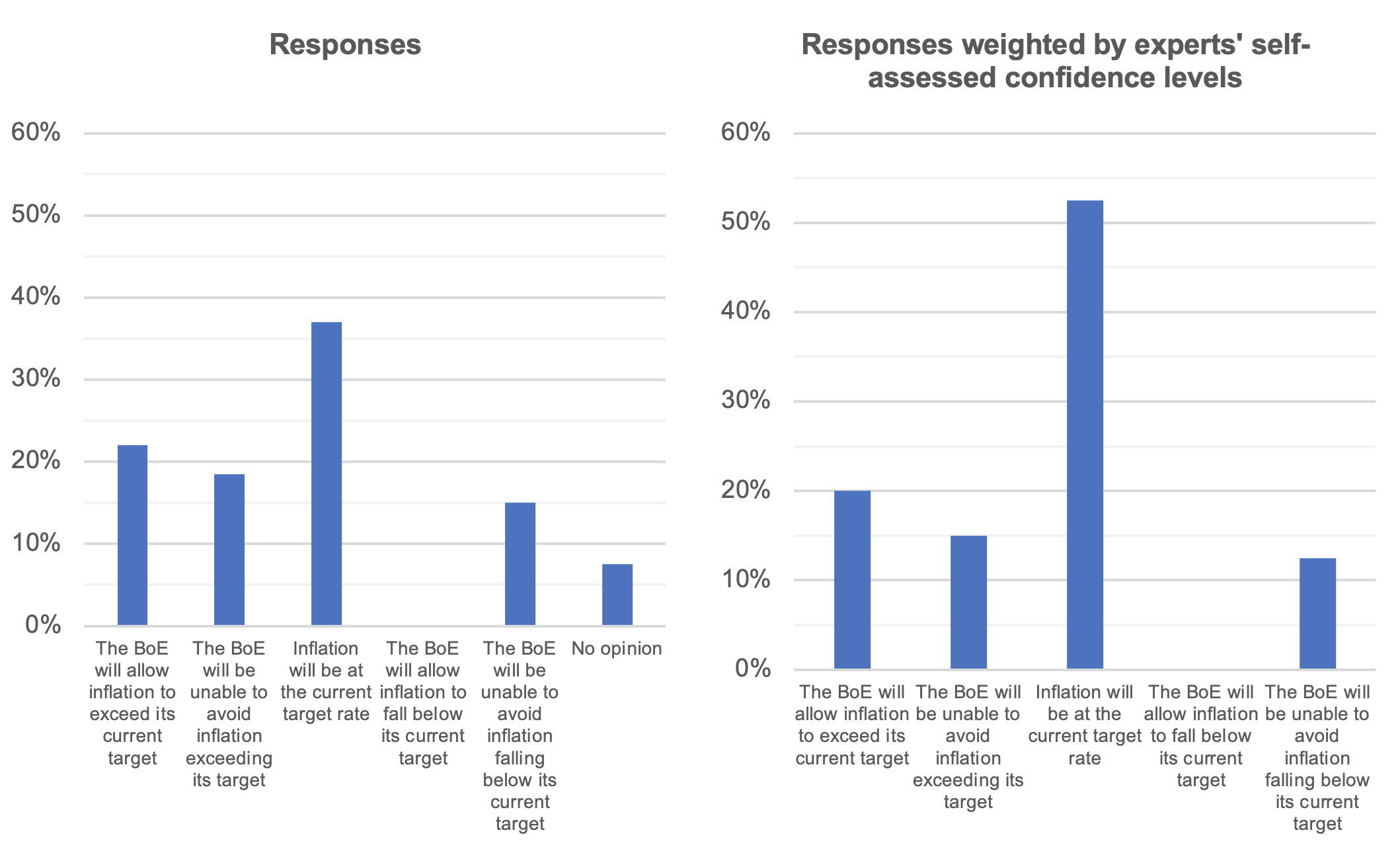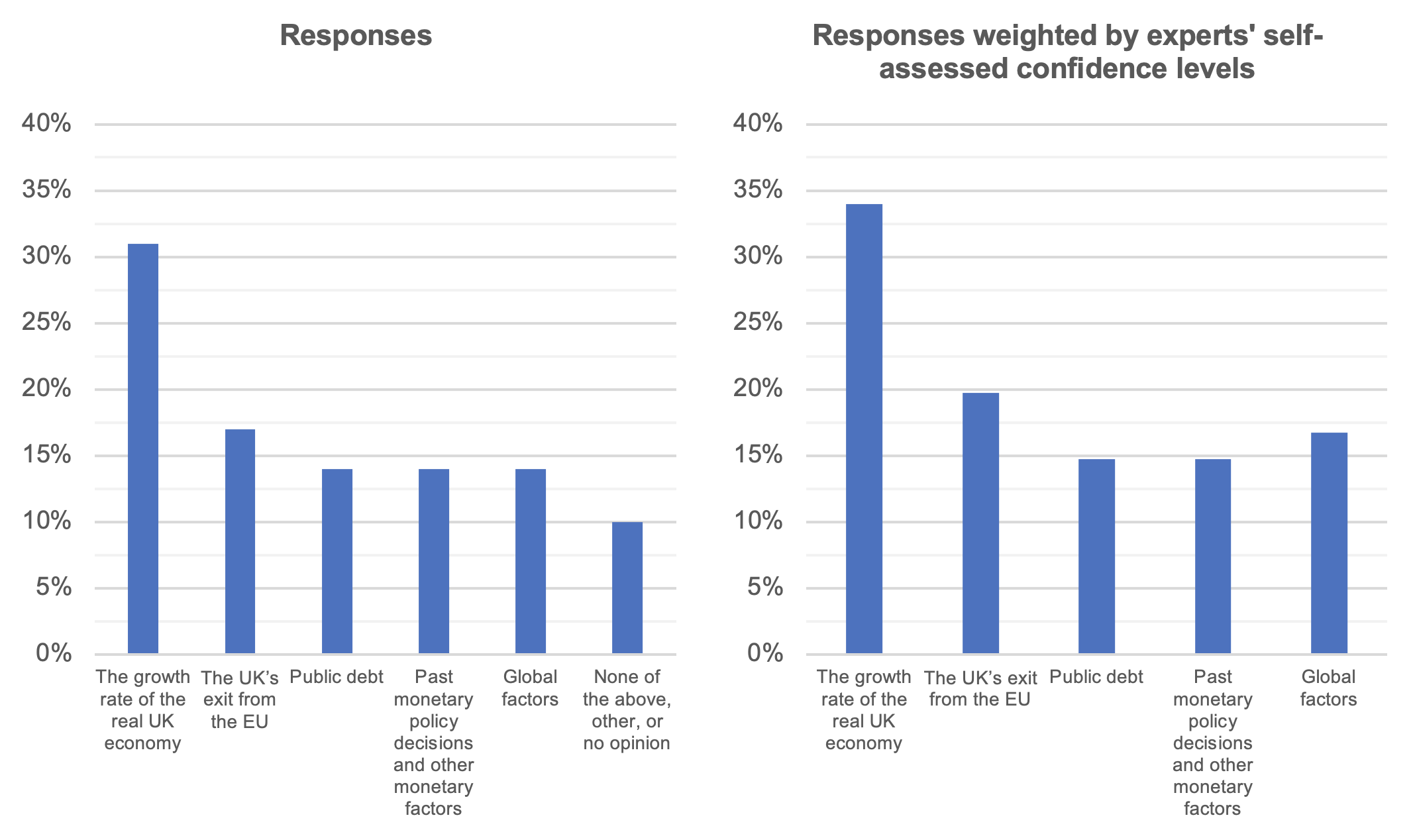Over the past year, concerns about inflation have reappeared. The January 2021 Centre for Macroeconomics (CfM) survey asked members of its UK-based panel whether inflationary or deflationary pressures would dominate in the upcoming decade and about the main driving forces of inflation.
Should we worry about post-Covid inflation?
Since the Global Crisis, inflation expectations have been subdued in most advanced economies. Central banks have made herculean efforts to hit their inflation targets from below. The consensus prior to Covid-19 was certainly that high rates of inflation would not be a major threat to advanced economies in the foreseeable future.
This past year, new voices have emerged expressing concern about inflation. In a provocative book, Goodhart and Pradhan (2020a) argue that deflationary (and low interest rate) pressures have been supported by a longer-term demographic cycle that is close to turning (see also Goodhart and Pradhan 2020b, Goodhart 2020, Wolf 2020). Except for Africa, populations in all world regions are now turning from growth to decline. In Europe, the baby boom generation has entered retirement age. China’s labour force is increasingly dominated by the one-child generation. Retirees in Japan and elsewhere have accumulated massive stocks of savings that may be spent in retirement.
The authors also argue that the deflationary pressures have been partially due to a massive increase in the global labour supply, with low wage workers in China, other parts of East Asia, and Eastern Europe integrating into an economy increasingly reliant on global supply chains.
Ilzetzki et al. (2020) argue that monetary forces may also have more of an inflationary bias this time. During the global crisis, the money base increased more than four-fold, but broader money measures (e.g. M2) barely changed. In contrast, since the beginning of the Covid-19 pandemic, not only did the money base increase by 50%, but also M2 has increased by 25% to date. This indicates that quantitative easing policies have been matched by a rise in bank deposits rather than remaining as bank reserves this time. Ilzetzki et al. (2020) also point to the disruption in global supply chains as a potential inflationary threat. Reis (2016) argues that a central bank balance sheet will not lead to high inflation on its own. Ellington and Milas (2019) show that UK money growth leads to inflation only when inflation is already high (above 3%).
Top UK investors are expressing concerns that UK monetary policy is increasingly driven by fiscal rather than monetary considerations (Stubbington and Giles 2021). This could reflect an additional upside risk to inflation. Looking at the historical record, however, Miles and Scott (2020) show that large debt accumulations of the Napoleonic and two world wars led to no more than moderate inflation and sometimes to deflation.
Surveys of inflation expectations for 2021 indicate an uptick in inflation expectations, with household inflation expectations at 3.8%. Expectations implied by inflation-protected gilts predict that inflation will exceed its target well into the upcoming decade. The ten-year inflation projection read off the UK instantaneous implied inflation forward curve is 3.5%. In contrast, similar breakeven calculations for the US show expectations of inflation at 2%. Eurozone inflation expectations are below target at all forecast horizons.1 Reis (2020) presents a model of inflation expectations and estimates that inflation expectations have been trending downward in the euro area since 2015. This suggests that UK inflation expectations might reflect domestic UK factors, including the UK’s exit from the EU, rather than global ones, as in Goodhart and Pradhan (2020).
Despite annual inflation of only 0.6% in December, the Bank of England (BoE) insists that inflation is still on target in its Monetary Policy Reports (Bank of England 2020). Chief economist Andy Haldane views upside and downside inflation risks as balanced.2 Further, he insists that although the Bank is willing to allow inflation to exceed its target for a period, the Bank would not allow high inflation expectations to become entrenched.
On this backdrop, panel members were asked to give their opinion on whether inflationary or deflationary pressures will pose a greater challenge to the Bank of England in the decade ending in 2030. In the first question, they were asked about the Bank of England’s ability and willingness to avoid inflation from rising above or dropping below its current target in the upcoming decade. This means that scenarios where the UK government increases (or decreases) the Bank’s inflation target were classified under the category of ‘allowing’ inflation to deviate from its target.
Question 1: Which of the following scenarios is most likely to hold on average for most of the upcoming decade?
Twenty-seven panellists responded to this question. More than a third of the panel predicts that inflation will remain at its current target on average. This view is even more common and reflects a majority opinion when weighing experts’ answers by their self-assessed confidence levels. More than 40% of the panel predicts that inflation will exceed its current target on average over the next decade. This group is roughly equally split between those who believe that this will be by (Bank of England or government) design and those believing that the Bank will be unable to meet its target. Furthermore, 15% of participants think that the Bank will be unable to stimulate inflation and it will remain below its target.
Question 2: Which of the following will be the greatest inflationary (or deflationary) force facing the UK economy?
Twenty-nine members of the panel responded to this question. The panel expressed a diverse set of views, with all factors receiving some support as potential drivers of inflation. Further, many respondents think that several of these factors will play out over the upcoming decade, based on their comments. The most common response was that the growth rate of the UK economy is the most important factor in determining inflation, receiving close to a third of the votes.
Several factors were raised as leading to inflation concerns. Panellist responses point to Brexit as the most common inflationary threat in the first half of the decade. Thorsten Beck (Cass Business School) writes that “Brexit has put upward pressure on costs, which will ultimately result in higher prices.” He further notes that “population decline due to emigration of EU citizens will cause upward pressure on wages and ultimately prices, e.g., in agriculture and services.” Kate Barker (British Coal Staff Superannuation Scheme and University Superannuation Scheme) agrees that “the UK in particular may struggle with inflation early in the decade - Brexit and Covid costs into a labour market with a lot of mismatch as different sectors and places flourish and fade. Possibly also downward pressure on sterling with concerns over breakup of the Union.” She warns that these factors could lead to higher inflation expectations.
A longer-term concern is public debt. Roger Farmer (University of Warwick) states that “inflation… is almost and everywhere a fiscal phenomenon (to mis-paraphrase Friedman). Once national treasuries become hooked on deficit finance, it will be very difficult for them to put down the crack pipe.” He qualifies that “The level of public debt is much less important than the rate of growth of public debt. The danger is that the public finances will become dependent on nominal borrowing that will become politically, very hard to reverse.” In my own comments, I agree that “the combination of high public debt and low nominal interest rates might lead the UK government to raise the BoE's inflation target.” I argue that “This may in fact be a desirable policy if inflation doesn't materialize.”
Interestingly, Simon Wren-Lewis (University of Oxford), on the other side of the debate, warns that fiscal policy may be a deflationary factor. He warns that “a Conservative government may return to fiscal contraction involving spending cuts, leading to an economy with subdued inflation and requiring the Bank of England to keep rates low.”
Finally, some participants pointed to the past and forecasts of the future to support their prediction. Wendy Carlin (University College London) notes that “inflation modestly exceeding the target has been the pattern running up to the COVID crisis and I don't see strong reasons for it to be very different.” I point to above-target inflation forecasts “based on the yields of inflation-protected gilts”.
Respondents with more benign inflation forecasts argue that inflationary and deflationary factors are more equally balanced. Further, they argue that the Bank of England has the required tools to respond if inflation were to emerge. Nicholas Oulton (London School of Economics) predicts that “If growth revives, then there would be upward pressure on inflation, but these would be much easier for the BoE to manage.” Morten Ravn (University College London) adds that “The increase in public debt” and other factors “probably means that inflation will come up, although I do not see this happening within a short horizon. To the extent that the BoE retains its independence, I would have thought that inflation could be kept at or close to its target.”
Those concerned about deflation mainly pointed to sluggish growth of the UK economy. As David Miles (Imperial College London) puts it: “The near term - very substantial - rise in UK unemployment is likely to persist and keep wage pressures low for several years. That makes a significant and persistent rise in UK inflation less likely so that the Bank of England may face inflation under 2% for much of the next few years.” Dawn Holland (NIESR), predicting that inflation will be on target, argues that the short-term inflationary pressures will be counterbalanced “by technological developments, and neither should necessarily pass through to longer-term expectations.”
Authors’ Note: The author acknowledges Jason Jia for his able research and editorial assistance.
References
Bank of England (2020), “Monetary Policy Report”, November.
Ellington, M and C Milas (2019), “Global liquidity, money growth and UK inflation”, Journal of Financial Stability 42: 67-74.
Goodhart, C (2020), “Inflation after the pandemic: Theory and practice”, VoxEU.org, 13 June.
Goodhart, C and M Pradhan (2020a), The Great Demographic Reversal: Ageing Societies, Waning Inequality, and an Inflation Revival, London, UK: Palgrave MacMillan.
Goodhart, C and M Pradhan (2020b), “Future imperfect after coronavirus”, VoxEU.org, 27 March.
Ilzetzki, E, C Reinhart and K Rogoff (2020), “Will the Secular Decline in Exchange Rate and Inflation Volatility Survive Covid-19?”, Brookings Papers on Economic Activity, Fall 2020.
Miles, D and A Scott (2020), “Will inflation make a comeback after the crisis ends?”, VoxEU.org, 4 April.
Reis, R (2016), “Funding Quantitative Easing to Target Inflation”, Jackson Hole Symposium, Federal Reserve Bank of Kansas City.
Reis, R (2020), “The People versus the Markets: A Parsimonious Model of Inflation Expectations”, Centre for Macroeconomics Discussion Paper 2020-33.
Stubbington, T and C Giles (2021), “Investors sceptical over Bank of England’s QE programme”, FT.com, 5 January.
Wolf, M (2020), “Why inflation could be on the way back”, FT.com, 17 November.
Endnotes
1 See ECB Harmonised Index of Consumer Prices (HICP) inflation forecasts here.
2 See https://www.bloomberg.com/news/articles/2020-12-23/boe-s-haldane-urges-laser-focus-to-avoid-nasty-inflation-shock





